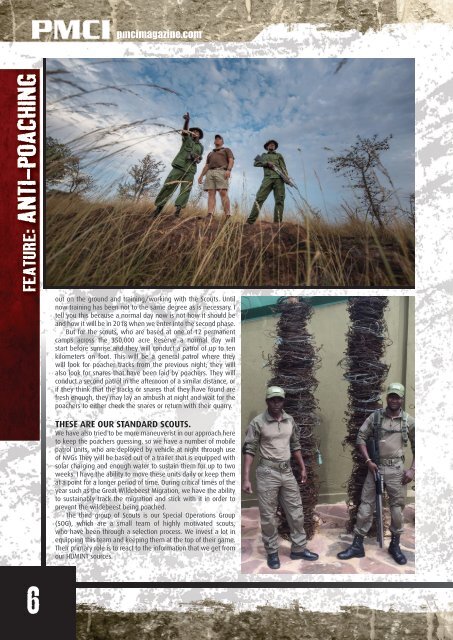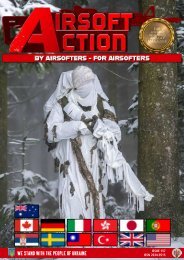PMCI - January 2018
Welcome to the first issue of PMCI for 2018 and we're kicking off with two very special reports! First up we speak to a man who has made the protection of our endangered species his mission and he tells us all about working "hands on" with a first rate anti-poaching team in Africa. Trampas also brings us a great interview with some top gunsmiths in the USA and asks them "what does the future hold" for the industry and for their very special creations. With yet more focus on equipment and training, there's a great new year ahead for the PMCI Team and for you, our readers!
Welcome to the first issue of PMCI for 2018 and we're kicking off with two very special reports!
First up we speak to a man who has made the protection of our endangered species his mission and he tells us all about working "hands on" with a first rate anti-poaching team in Africa. Trampas also brings us a great interview with some top gunsmiths in the USA and asks them "what does the future hold" for the industry and for their very special creations.
With yet more focus on equipment and training, there's a great new year ahead for the PMCI Team and for you, our readers!
Create successful ePaper yourself
Turn your PDF publications into a flip-book with our unique Google optimized e-Paper software.
pmcimagazine.com<br />
6FEATURE: ANTI-POACHING<br />
out on the ground and training/working with the Scouts. Until<br />
now training has been not to the same degree as is necessary. I<br />
tell you this because a normal day now is not how it should be<br />
and how it will be in <strong>2018</strong> when we enter into the second phase.<br />
But for the scouts, who are based at one of 12 permanent<br />
camps across the 350,000 acre Reserve a normal day will<br />
start before sunrise and they will conduct a patrol of up to ten<br />
kilometers on foot. This will be a general patrol where they<br />
will look for poacher tracks from the previous night; they will<br />
also look for snares that have been laid by poachers. They will<br />
conduct a second patrol in the afternoon of a similar distance, or<br />
if they think that the tracks or snares that they have found are<br />
fresh enough, they may lay an ambush at night and wait for the<br />
poachers to either check the snares or return with their quarry.<br />
THESE ARE OUR STANDARD SCOUTS.<br />
We have also tried to be more maneuverist in our approach here<br />
to keep the poachers guessing, so we have a number of mobile<br />
patrol units, who are deployed by vehicle at night through use<br />
of NVGs They will be based out of a trailer that is equipped with<br />
solar charging and enough water to sustain them for up to two<br />
weeks. I have the ability to move these units daily or keep them<br />
at a point for a longer period of time. During critical times of the<br />
year such as the Great Wildebeest Migration, we have the ability<br />
to sustainably track the migration and stick with it in order to<br />
prevent the wildebeest being poached.<br />
The third group of Scouts is our Special Operations Group<br />
(SOG), which are a small team of highly motivated scouts,<br />
who have been through a selection process. We invest a lot in<br />
equipping this team and keeping them at the top of their game.<br />
Their primary role is to react to the information that we get from<br />
our HUMINT sources.


















